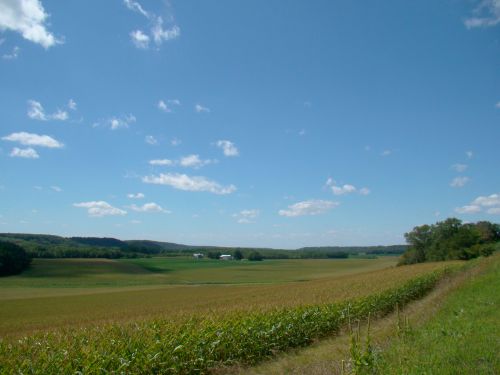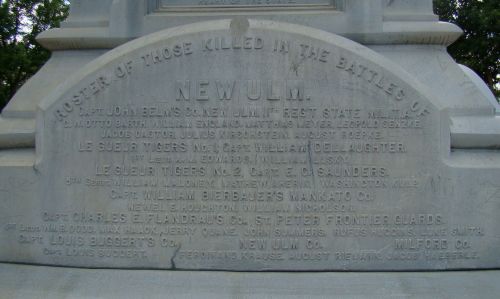This year is the 150th anniversary of a seminal event in Minnesota history, the U.S.-Dakota War. Like many Minnesotans, I knew very little about the war itself or the events leading up to it. I could say that was because I grew up in Wisconsin, not in Minnesota, but I don’t know how much I would have learned about it even if I had. After all, I remember learning about Wisconsin Indians only very briefly in fourth grade. I think we might also have spent a week on American Indians in my U.S. history class in high school. (I believe I wrote a short paper on the Nez Perce.) This inadequate treatment relegated Indian people to the past, denying their resilience and vitality in the present day.

The Minnesota River Valley was the site of most of the battles during the 1862 war. Boasting fertile land, European American settlers were eager to turn it into farmland.
In the last few months I have read numerous articles and books about the events leading up to the 1862 war as well as first-person accounts and reactions of European Americans, mixed bloods, and Dakota people.

The Minnesota River near the historic river crossing known as Traverse des Sioux. The Treaty of Traverse des Sioux (1851) in which the Dakota ceded 24 million acres of land was signed near here.

This quote appears on an exhibit panel in the Treaty Site History Center at Traverse des Sioux in St. Peter.
I have visited several of the important sites associated with the war: Traverse des Sioux, where one of the 1851 treaties with the Dakota was signed; New Ulm, which was attacked twice by Dakota warriors and whose residents fled to Mankato; Fort Ridgely, also attacked twice; and of course Fort Snelling State Park, where approximately 1600 Dakota noncombatants (older men, women, children) were kept in an internment camp (some refer to it as a concentration camp) over the winter of 1862-1863.
Whatever you call it, up to 300 Dakota died there that winter and the survivors were put on steamboats in May of 1863 and shipped down the Mississippi River and up the Missouri River to Crow Creek Reservation in present-day South Dakota. There many more died of malnutrition and exposure over the next few years before the survivors were moved on once again, this time to the Santee Reservation in Nebraska.

This memorial in Fort Snelling State Park remembers and honors the Dakota who were imprisoned and who died here during that winter.
I did not go into Mankato, where the largest mass execution in American history took place on December 26, 1862, when 38 Dakota were hanged (at least one of whom was confused with another man with a similar name and hanged by mistake).
I have struggled to find the words to describe those events. Unrelentingly sad. Deplorable. There was plenty of greed, bigotry, and corruption. The government’s failure to uphold the terms of not one, but several treaties, is only the beginning. But there were some on both sides of the conflict who behaved with honor, courage, and principle.

Quote on a panel in the Treaty Site History Center in St. Peter. President Lincoln had sent George Day to investigate the Indian Department in Minnesota
Sarah Wakefield was held captive for the six weeks of the war, but was protected by a Dakota man named Chaska (the one hanged by mistake at Mankato). In return for trying to defend him before during the military trials and pointing out the legitimate grievances of the Dakota, she was vilified by most Minnesotans, who accused her of falling in love with Chaska, even sleeping with him.
Then there was Bishop Henry Whipple, who went to Washington, D.C., to meet with President Lincoln in person and argue for clemency for the more than 300 Dakota sentenced to hang by the military court. Bishop Whipple also gave protection to some of the small number of Dakota who remained in the state, living under his and Alexander Faribault’s protection in the city of Faribault.
The more you explore the sources, the more complicated everything becomes – not an unusual situation in history. And yet certain facts remain: the U.S. government did not live up to its treaty obligations; a minority of the Dakota went to war; about 600 white settlers were killed, most within the first few days; the U.S. government conducted the largest mass execution in our history in Mankato; and the Dakota nation was punished by being expelled from the state.

In New Ulm there is a monument to the European Americans who died during the war. This inscription lists those who died during the battles of New Ulm.
The Dakota are still a part of Minnesota today (many began returning not long after the war in spite of the government bounty on them). But that does not mean that we should not acknowledge the great wrongs that were done. We make a terrible mistake when we dismiss historical events as irrelevant in the present, as over and done with. We need to recognize that the repercussions of events such as the U.S-Dakota War are still felt today. We should try to heal the wounds. And we should learn from events like this that the seeds of terrible conflict are often sown decades before violence takes over. I wonder how different our behavior as a country would change if we could learn from these painful events in our past. As Mark Twain said, history doesn’t repeat itself, but it does rhyme.
